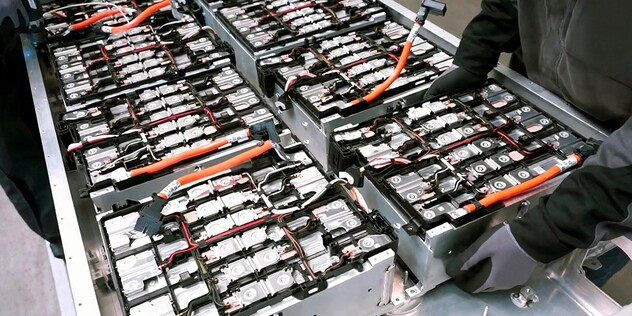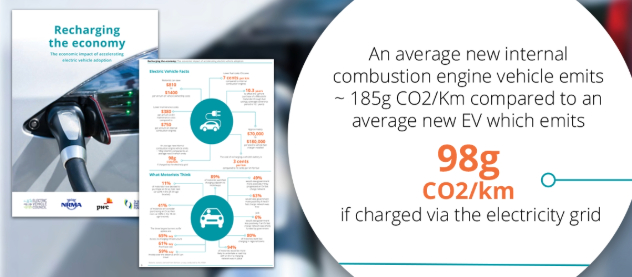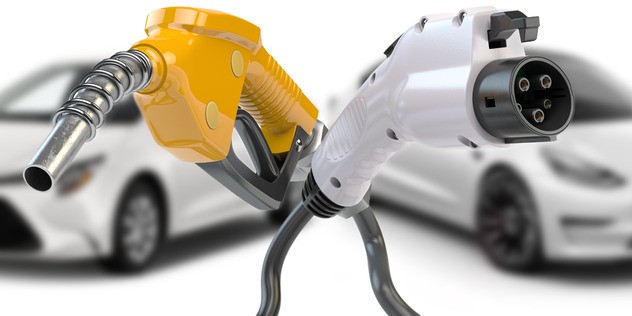
With the emergence of electrified motoring in Australia and the shake-up of global transportation and infrastructure convention it poses, EVs have become a hot topic – attracting (possibly more than) their fair share of criticism.
While the NRMA has been supporting Australian motorists for more than 100 years – and will continue to regardless of how your vehicle is powered – we believe an EV shouldn’t be off the table as your next purchase because of misrepresentations, myths or anti-EV propaganda.
So, to give Australian buyers the clarity needed to make informed choices about whether their next vehicle purchase should be an EV, here are some of the most common EV myths, busted.
One of the most prevailing myths surrounding EVs is that their most expensive component – the on-board battery packs – don’t last the life of the vehicle.
EV battery lifespan critics need look no further than the story of this Tesla Model X which has, to this day, travelled more than 640,000km – its original battery pack lasting more than 507,000km – to see this is false.
This EV, among others with similar mileage, is owned by California-based EV mobility company Tesloop. Why is this important? Well, Tesloop uses its fleet commercially, meaning its charging regime and maintenance is about the worst possible for ensuring battery longevity: a full discharge; followed by a rapid charge rate, and; charging to 100 per cent capacity.
Put simply, this EV's battery packs racked up more than 500,000km without even following proper maintenance and charging practices - 25 years if driving 20,000km a year.
An more recent example closer to home is that of an Australian Tesla owner who uses his Tesla Model S for airport pickups, using fast chargers the vast majority of the time. The EV battery in his Tesla was replaced after 666,666km, an equivalent of 33 years driving with an average of 20,000km a year.
For those wondering how long EV batteries last in vehicles made by other carmakers, a crowd-sourced study of 15,000 EVs by Recurrent Auto shows that after ten years' use, the average battery replacement rate for EVs is at most 4 per cent. Older EVs with less advanced battery management systems have a higher replacement rate of 7.5 per cent.
Despite these examples, it’s also not safe to assume all battery packs will make it so far. Much like petrol engines, covering half a million kilometres is a great run, but there is always the exception to the rule. However, the good news is that the cost of replacing an EV battery is falling, and by 2030 are expected to cost 40 per cent less than today.
While battery packs can get you more than half-a-million kilometres, it’s also true their driving range diminishes over time – however this deterioration is not as dramatic as you may be led to believe.
In 2019, a study carried out by Electric Autonomy, a Canadian government-backed organisation that tracks the electric vehicle transition, looked at battery capacity deterioration of 21 electric vehicle models over five years of driving. The study found that EV batteries lose, on average, just 2.3 per cent of capacity per year of driving. For a car with a 480km driving range when new, this means 55km of driving range was lost in half a decade of service – about 11km per year.
Additionally, the EV battery longevity study by Recurrent Auto mentioned above also shows that most degradation occurs in the first 80,000km of ownership. And degradation is not linear - the largest drops in range occur in the first year or two of ownership before levelling out.

Need more assurance? Manufacturers guarantee their batteries, with the most common EV battery warranty period lasting eight years/160,000km. This warranty covers batteries that lose more than 30 per cent of their capacity during this period (meaning the battery retains less than 70 per cent of its original capacity).
According to the Electric Autonomy study’s rate of deterioration, the average EV won’t approach that kind of degradation before its 13th birthday. At this point an EV with a 480km range when new should still cover 336km between charges – more than enough to make it a practical city car (given the average Australian work commute is about 35km) with the occasional road trip thrown in.
We know EV batteries can last a really long time, but are they expensive to replace if something goes wrong outside of the warranty period? The simple answer is: yes, but costs are decreasing.
Replacement EV batteries, given variances in size and complexity, don’t have a standard price, but a safe window for cost of replacement is about $8,000–$20,000 for an average size EV battery.
While these are large amounts, it’s important to remember the internal combustion engine (ICE) in a conventional vehicle is also its most expensive item, with prices often approaching the above figures if replacement with a new unit is necessary.
Also, as mentioned above, financial analysts predict the price of batteries will drop drastically in coming years. This should bring the cost of replacing an EV battery down significantly.
It's also a good idea to factor in the cost of owning an EV holistically over the life of the vehicle. EV battery packs, and much of the vehicles themselves, cost next to nothing to maintain. Over the years, these savings on engine, transmission and brake components add up.
Factor in not paying a premium at the bowser and by the time you need a replacement battery – if you ever do – you may have more than made up the expense.
This is one of the more unreasonable myths we’ve come across, as it blames EV technology for things out of its control.
The truth is an EV can only be as ‘green’ as the electrical grid from which it’s charged. In Australia, our grid is (currently) heavily reliant on coal, so when driving an EV charged from the grid there are associated emissions. However, EV motors are more efficient at using energy than ICE cars, and the grid is becoming greener year by year.
Research carried out by the NRMA and PwC Australia found that a new battery electric vehicle (BEV) charged from the grid is responsible for around 98g CO2/km of emissions, whereas an equivalent new ICE vehicle emits almost double that at 185g CO2/km.

Modelling also shows that as our grid becomes increasingly powered by renewables, and EV battery technology improves, this BEV emission figure will fall to about 58g CO2/km – less than a third of an ICE vehicle.
At a street-level, most electric cars also produce less fine particulate matter than equivalent ICE models, meaning the air in the you breath in walking alongside a road full of electric cars is not as damaging to your health as one packed with ICE vehicles.
Further to this, EV owners do not have to charge from the grid. When charged solely with renewable energy – such as from a home charger powered by solar – the cars are responsible for basically zero greenhouse emissions while driving.
As debate shifts from “will EVs even take off Down Under?” to “how will infrastructure manage when they do?”, one of the largest focuses for future-proofing Australia has been its electrical grid’s capacity.
Modelling conducted by Reliable Affordable Clean Energy (RACE) for 2030 Cooperative Research Centre estimates EVs will make up 80 per cent of new-car sales in Australia by 2030 – representing 20 to 25 per cent of our total fleet.
This report calculated that if all of these EVs were plugged into 7kW home chargers at the same time (during an evening period), the instantaneous draw on the grid would increase by approximately 30 giga watts – almost doubling current peak energy demands.
While this figure could lead to a huge instantaneous burden on the grid, RACE’s calculations also determined a 25 per cent EV fleet would only lead to a cumulative consumption increase of 20 giga-watt-hour a day. In relative terms, if that extra consumption was spread evenly across the day, it would only result in an increased instantaneous demand of about 3 to 4 per cent across the day.
Two important things to remember here are: EV uptake – although accelerating – will not happen overnight, and there will be time to develop and future-proof our infrastructure to suit any increase in energy demand, and other nations with much greater EV uptake are already experimenting with scheduled EV charging to help cushion the blow to their electrical grid.
This one is true – for now. Australia is in an especially tricky chicken and egg situation when it comes to public chargers and even EV models themselves.
In past years the absence of an EV strategy from government has meant carmakers were reluctant to bring more EV models, and fast charging infrastructure was sparse.
But the introduction of a National Electric Vehicle Strategy now means there is more investment in a EV infrastructure, part of which includes the national EV charging network that the NRMA is rolling out. Also, the introduction of a New Vehicle Efficiency Standard will ensure that carmakers are encouraged to bring more EV models with increasingly faster charging capabilities.
But how long does it take to charge an EV? It all depends on where you are charging, and other factors like how fast your car can charge, and how "full" your batter already is.
Today, the fastest public chargers in Australia output 350kW DC. While there are currently no electric cars that can handle this rate of charging, some brands have promised charge times from 5 to 80 per cent in as little as eight minutes for future models at this output.
In the works are chargers producing up to 1000kW. EV battery tech may take a while to catch up to this sort of figure, but when it does, charge times could come down to the mere minute or two it takes to fill a car’s tank with petrol or diesel.
In the meantime, stopping for half an hour on a road trip to recharge yourself as well as your car is the answer!
A further consideration is if you charge your EV at home overnight, like many drivers will do during normal day-to-day driving, you will very rarely need to rely on public charging infrastructure. There are also other options for charging an EV if you live in an apartment or a terrace.
The claim that EVs can’t tow is patently false, with many models in the Australian market listing Aussie regulation-compliant tow capacities. However, this being said, just because an EV can tow does not make it a viable tow vehicle for all owners and circumstances.
A huge reduction in driving range while towing is the main issue cited by EV sceptics – and it’s not without grounds. This also happens with an internal combustion engine (ICE) car but as there are lots of service stations it is not as much of a concern.
In 2020, Audi USA conducted an 811-kilometre test with their all-electric e-Tron towing at its 1800kg capacity limit. What did they find? Averaging 97km/h, the SUV consumed about 48kWh per 100km – approaching double the model’s regular consumption figure if it weren't towing. At this rate, the biggest battery option e-Tron (95kWh) would travel just 200km on a full charge.
Our own Open Road EV towing test by Tim Pomroy showed that when towing a trailer with an EV, the combined laden weight of 630kg reduced the towing range of a Polestar 2 by 90km (equal to a 23 per cent increase in energy use.)
In short, how much towing will affect an EV’s driving range varies depending on the weight of the payload and the wind resistance it generates. This additional drag affects both electric and ICE vehicles.

So, can EVs tow? Yes they can, and, given the impressive torque figures many EVs boast, are very well suited to it in the right applications. Need to tow a caravan across the Nullarbor? An EV probably isn’t for you (yet), but pulling a box trailer or dinghy across town? That’s right up an EV’s alley.
While the EVs of yesteryear had (comparatively) tiny battery capacities and discharge rates resulting in doughy acceleration, this is no longer the case. Performance records are being set and beaten constantly by modern EVs due to the inherent nature of how an EV accelerates.
Torque – the rotational force an engine/motor produces and transfers to a vehicle’s wheels – is an EV’s bread and butter. Torque is also what gets a car moving from a standstill, meaning EVs can go from zero to fast in a small amount of time.
Beyond this, as EVs generate torque near-instantly, their traction control systems also surpass what ICE performance vehicles’ are capable of, meaning they can more fully capitalise on tyre grip to provide faster acceleration.
The largest reason lays in gear ratios, i.e. how many revs an engine/motor must make per rotation of the driving wheels. Some gear ratios are better suited to low-speed or standing start acceleration, whereas others are suited to efficient high-speed cruising.
Due to the way EVs produce torque, most come equipped with single-speed transmissions (save some high-performance models) and manufacturers opt for around-town punchiness over highway efficiency when selecting this ratio.
This is different to ICE-equipped vehicles, where manufacturers use multi-speed (or multi-ratio) transmissions to ensure the car always has a suitable gear ratio.
The result is EVs are more efficient at low speeds due to not having to rev their electric motors as high, which also produces heat – the enemy of efficient electrical energy transfer. However, as EVs approach price parity, we’re likely to see multi-speed transmissions become more commonplace in the vehicles and for their highway consumption to improve.
Additionally, in stop-start traffic an EV can use regenerative braking more often to recover energy back to the battery rather than losing it in heat via the brake pads. This also increases range.
An EV’s most expensive and complicated component, its on-board battery pack is primarily responsible for these increased emissions.
However, as battery technology and materials advance and the energy density of batteries increases, less material will be needed to achieve the same kilowatt-hour capacity. This will bring down manufacturing costs and emissions.
Because EV manufacturing produces higher greenhouse emissions than for ICE vehicles, EVs must be driven to a ‘break-even point’ before they are greener than ICE vehicles.
An EV’s break-even point is when the vehicle has, over its lifecycle, become responsible for the same emissions as a comparable ICE vehicle.
This distance varies depending on the model of EV, the way it’s driven and the grid from which it’s charged. Thanks to an analysis conducted by Reuters using Argonne National Laboratory modelling, we have some figures.
The analysis looked at a Tesla Model 3 and Toyota Corolla – Australia’s best-selling EV and small car respectively – to work out the break-even point of the Tesla according to three grid configurations.
It found that if charged from a 100 per cent coal-fired grid, the Model 3 needs to cover about 125,500km to break even. From the average United States’ energy mix (of 23 per cent coal-fired, plus other fossil fuels and renewables), the Model 3 matches the Corolla in roughly 21,700km, and on a 100 per cent hydroelectric grid, the Tesla has already contributed less emissions in just over 13,500km of driving.

As of early 2022, an average of roughly 75 per cent of Australia’s grid is powered by fossil fuels. While this varies from state to state, on average it means a Model 3 charged in Australia would need to cover about 94,000km to break even. Although that’s a lot of driving, the good news is that this figure will drop each year as Australia moves towards a greener grid. And of course, it is much lower already if the car is charged primarily at home using solar.
Australia’s own EcoBatt breaks down and selling on the precious metals in EV batteries. In fact, they’ve gotten so good at it that the company says up to 95 per cent of the average EV battery is able to be recycled.
Other companies, such as Australia’s Relectrify reuse individual cells, rebirthing decommissioned EVs’ battery packs for us as building battery energy storage systems.
However, while EV batteries can be recycled, the practice is underutilised globally and in Australia.
A 2021 study by the CSIRO found that just 2 per cent of Australia’s 3,300-tonne Li-ion battery waste was recycled locally in the year prior. However, it is important to note that the vast majority of this waste comes from small Li-ion batteries used in devices like phones, tablets and handheld power tools. And, most of this waste was shipped overseas, not dumped into Australian landfill as some claim.
Nevertheless, large scale recycling of Li-ion batteries is imperative. The study says that the nation’s Li-ion waste is growing at 20 per cent per year, and is predicted to exceed 100,000 tonnes by 2036. Li-ion waste is inherently dangerous, as it poses risks of combustion and environmental contamination.
The good news is that because EV batteries are useful for two decades (and can be used in second-life applications after that,) there is time to scale up EV battery recycling. And because they are full of valuable materials, they are worth too much to simply take to the tip.